Metal Production, Value and Trends
The production of many of the major nonferrous metals in 2000 is shown in the three graphs in Figure 1. In many instances other major forms of the element, other than pure metal, are also included in the figure. Aluminum, copper and zinc are the biggest tonnage non-ferrous metals produced. When aluminum was first produced it was so expensive that it was considered to be a precious metal! In 1852 the price was US$1200/kg (gold was worth only about $610/kg at the time). Napoleon used aluminum cutlery on state occasions. In 2003 the price was about $1.50/kg (and about $2.60 at this writing). Two big technological developments changed the value (and availability) of aluminum: the Hall-Heroult electrochemical process for making aluminum metal from alumina (Al2O3) in 1886, and the Bayer process for making pure alumina, Al2O3, from bauxite ores (impure AlO(OH)) in 1887. Thus discovery and innovation are major driving forces in the production of metals. (That being said, the metal production industry is a conservative business and it can be slow to adopt new, unproven technology. With metal production plants costing on the order of $108-109, the risks are high!)
Historical trends for the production of some metals are shown in Figures 2 and 3. Generally these refer to primary sources, such as mine production, and not secondary sources such as recycling. Aluminum production grew substantially during the second world war, then declined thereafter. As the post-war boom ensued, demand greatly increased due to the utility of aluminum in many sectors of the economy. Recessions between the 70’s and 90’s caused temporary drops in production. Copper was being produced at nearly half a million tons per year by the end of the 19th century. Note how copper, zinc and lead production dropped in the first few years of the Great Depression (1929-1939). Lead production decreased around 1980. The toxicity of its compounds is one factor. Tetraethyllead, used as a gasoline additive, is now largely banned. Likewise, lead in paints has been curtailed. The major use of lead is batteries; in this regard it is so far unsurpassed. Recently lead demand has increased, largely due to economic growth in China. Gold has often been used as a safe haven for investment when there is increased political or economic insecurity. In recent years the sale of national gold reserves has also impacted price and production. As high grade resources have been used up in many countries gold has been produced from increasingly lower grade ores. Clearly there are many factors that can have large effects on metals production. Currently one of the biggest economic drivers affecting demand for many metals is the surge in growth of some developing countries, particularly China.
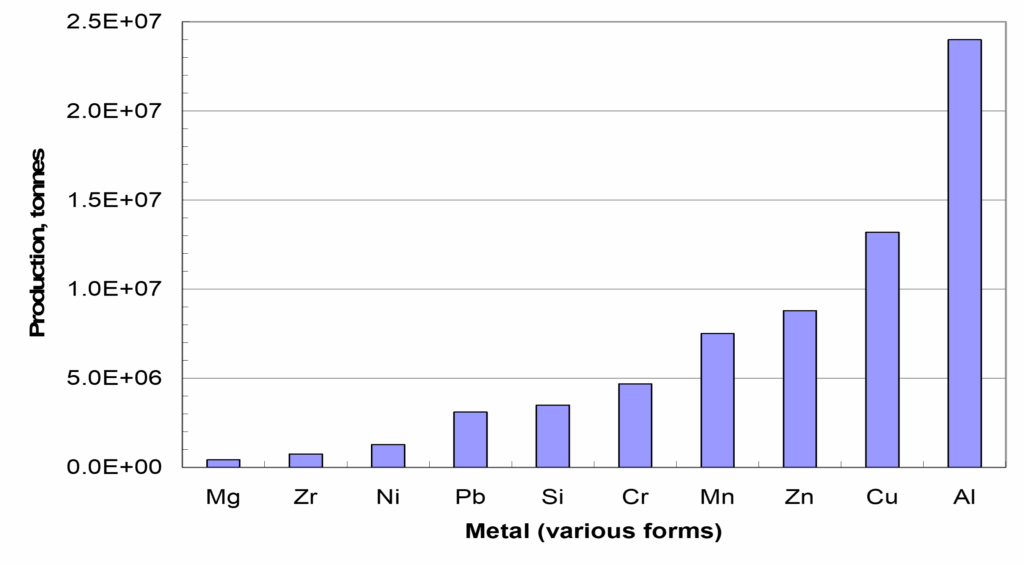
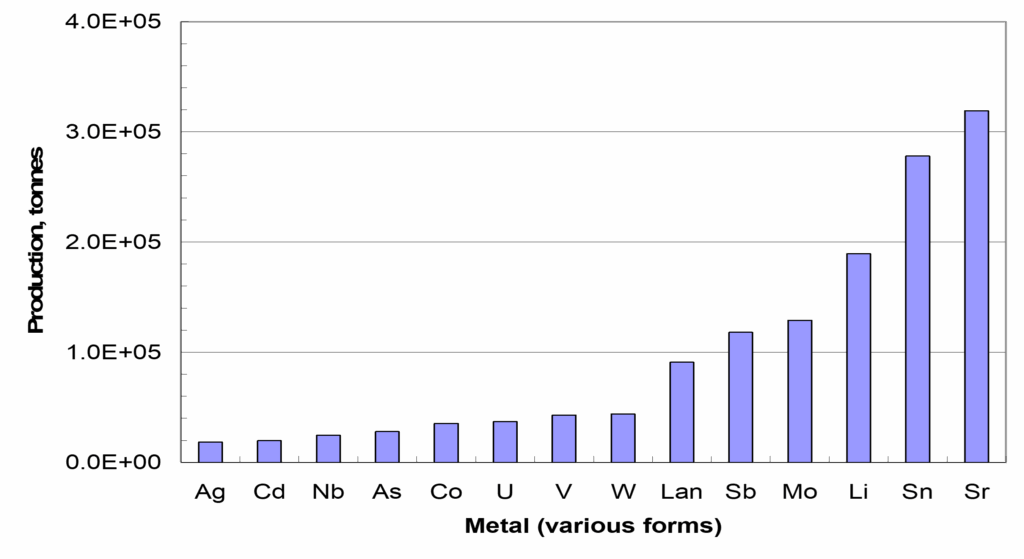
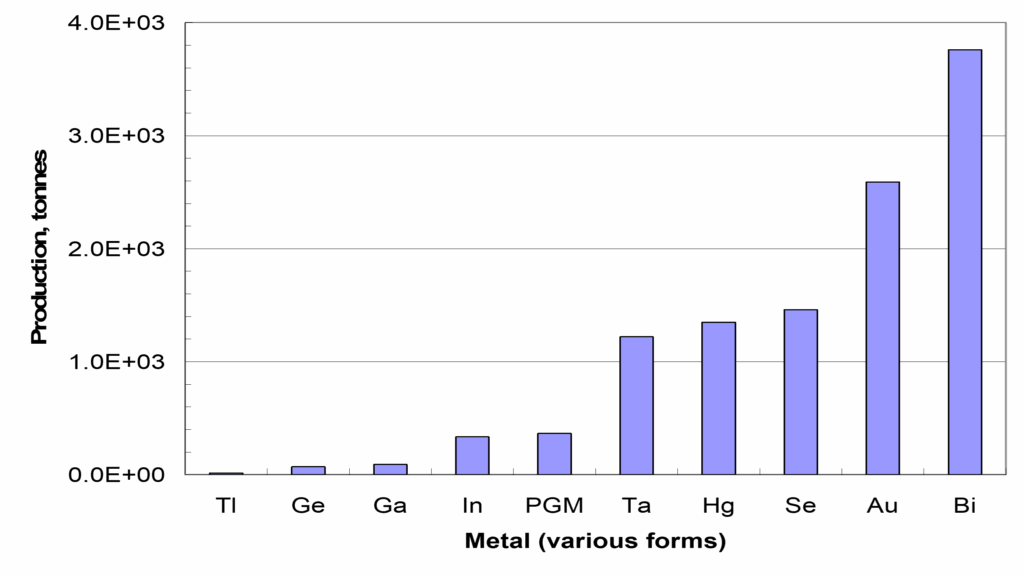
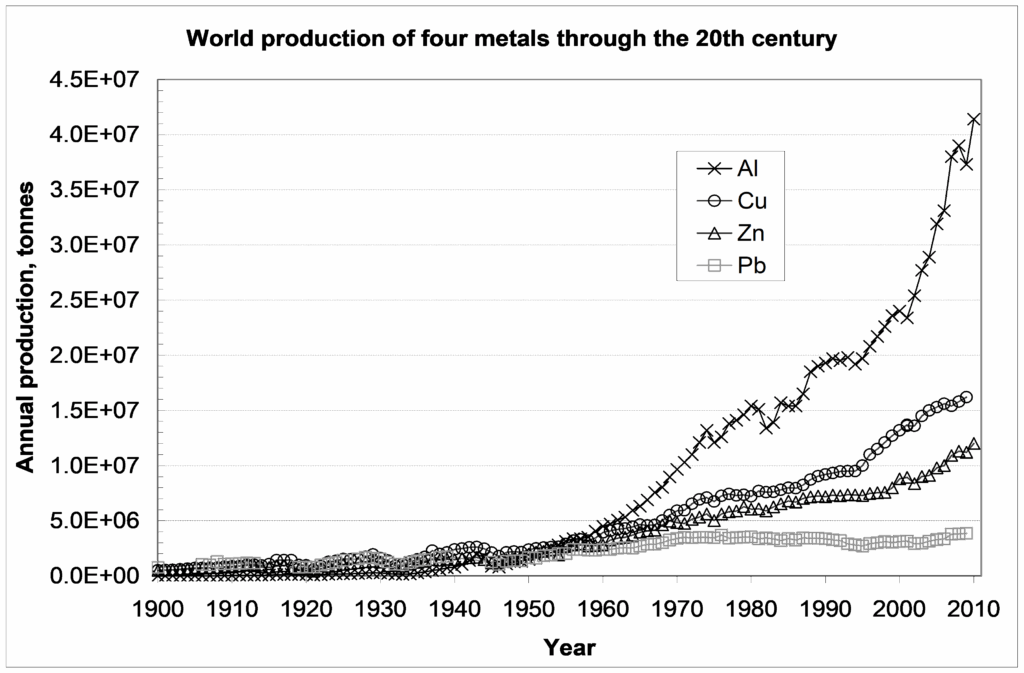

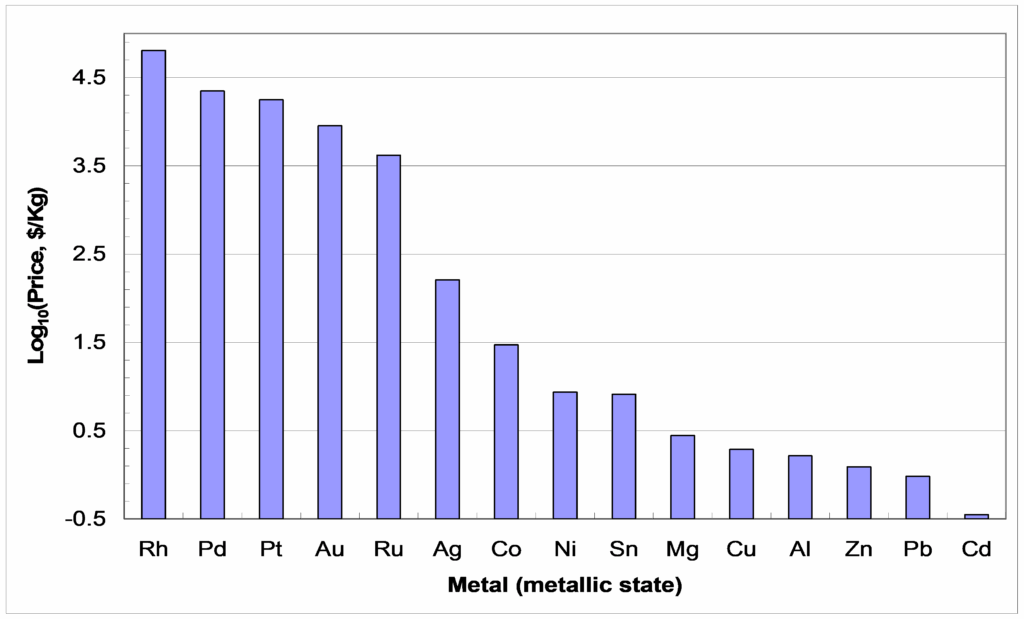
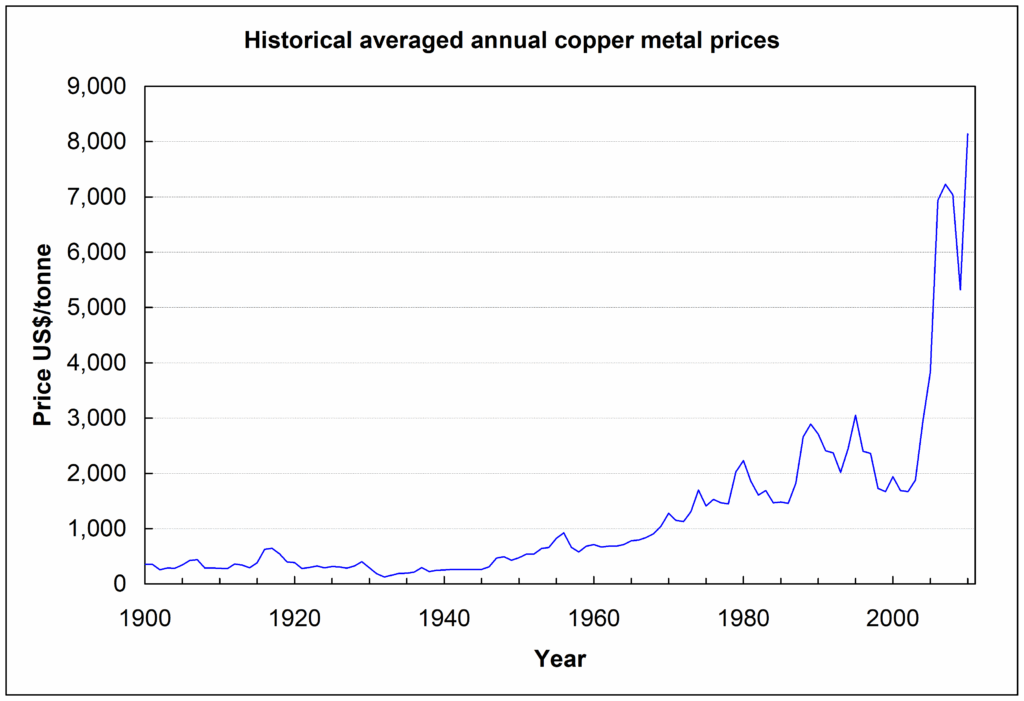
The range of value of metals is illustrated in Figure 4. Platinum group metals (PGM’s: Ru, Os, Rh, Ir, Pd and Pt) are among the most expensive and rare. (Typically, platinum is more expensive than palladium.) The cost of rhodium in 2000 was about $64,000/kg ($1990/troy ounce). The highest tonnage metals are among the cheapest, which makes sense. Some metals are produced only as by-products of other metal production processes. For instance, no ores are mined primarily for thallium, which has become very valuable of late due to its use in electronics, e.g. large-screen TVs. Thallium is produced as a by-product of copper, lead and zinc sulfide ores processing. By-product metals may range greatly in value. Platinum group metals and gold are often recovered as by-products, for instance of copper or nickel/cobalt production. (They are also recovered from ores mined primarily for this purpose.) By-product metals sometimes have to be produced even if they are of little value, for instance due to toxicity that does not permit easy disposal.
Metals prices fluctuate significantly with time for a variety of reasons. There are periods of boom and bust in the metals business. It takes several years to finance and build a large metal production plant and a year or so to get it to full production. Thus there can be significant lags between supply and demand changes. Variations in prices of copper are indicated in Figure 5, which shows the average annual price of copper in the U.S. since 1900. The major decline starting in 1995 saw a drop in prices of about 40% in just three years. Of late copper prices have soared. At this writing copper prices are exceeding $9,000/tonne. This may be due in part to speculation of the sort that affects gold prices.
Media Attributions
- Major Metal Production, 2000 (Part 1) © Bé Wassink and Amir M. Dehkoda is licensed under a CC BY-NC (Attribution NonCommercial) license
- Major Metal Production, 2000 (Part 2) © Bé Wassink and Amir M. Dehkoda is licensed under a CC BY-NC (Attribution NonCommercial) license
- Major Metal Production, 2000 (Part 3) © Bé Wassink and Amir M. Dehkoda is licensed under a CC BY-NC (Attribution NonCommercial) license
- Global Metal Production Since 1900 © Bé Wassink and Amir M. Dehkoda is licensed under a CC BY-NC (Attribution NonCommercial) license
- World production of gold since 1900 © Bé Wassink and Amir M. Dehkoda is licensed under a CC BY-NC (Attribution NonCommercial) license
- Range of prices for various metals in 2000 ($US/kg) © Bé Wassink and Amir M. Dehkoda is licensed under a CC BY-NC (Attribution NonCommercial) license
- Historical U.S. copper prices since 1900 © Bé Wassink and Amir M. Dehkoda is licensed under a CC BY-NC (Attribution NonCommercial) license
A common unit of mass when speaking of precious metals. 1 Troy ounce = 31.1034768 grams.

